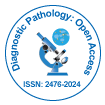Transplant Rejection and Graft-versus-Host Disease: A Delicate Balance in Modern Medicine
Received: 30-Apr-2025 / Manuscript No. DPO-25-165030 / Editor assigned: 02-May-2025 / PreQC No. DPO-25-165030 / Reviewed: 16-May-2025 / QC No. DPO-25-165030 / Revised: 23-May-2025 / Manuscript No. DPO-25-165030 / Accepted Date: 30-May-2025 / Published Date: 30-May-2025 DOI: 10.4172/2476-2025.1000249 QI No. / DPO-25-165030
About the study
Organ and tissue transplantation represent some of the most remarkable achievements in modern medicine. They offer hope and extended life to patients suffering from terminal organ failure or devastating injuries. Yet, as miraculous as transplantation is, it carries inherent risks, chief among them being transplant rejection and Graft- Versus-Host Disease (GVHD). These immunological complications present significant challenges and remind us of the complex interplay between donor tissues and the recipient's immune system.
Transplant rejection occurs when the recipient's immune system identifies the transplanted organ or tissue as foreign and mounts an immune response against it. There are three types of rejection: hyperacute, acute and chronic. Hyperacute rejection happens within minutes to hours of transplantation, often due to pre-existing antibodies in the recipient. Acute rejection typically occurs within weeks or months and involves the activation of T-cells against donor antigens. Chronic rejection, which can develop over months to years, leads to a gradual loss of graft function and is often resistant to treatment.
To prevent rejection, patients are prescribed immunosuppressive therapies, which blunt the immune response and allow the transplanted tissue to survive. However, immunosuppression comes at a cost, leaving patients vulnerable to infections and even certain cancers. Striking the right balance between preventing rejection and maintaining immune competence is a daily challenge for transplant physicians and researchers.
On the other side of the spectrum lies graft-versus-host disease, a condition unique to allogeneic bone marrow and stem cell transplants. In GVHD, it is the donor's immune cells that attack the recipient's tissues. Acute GVHD usually manifests within the first 100 days posttransplant and commonly affects the skin, liver and gastrointestinal tract. Chronic GVHD, which can occur later, has a broader range of symptoms and can mimic autoimmune disorders.
GVHD is particularly concerning because it can severely impact the quality of life and survival rates of transplant recipients. Like transplant rejection, its management relies heavily on immunosuppressive drugs, but treatment strategies are continually evolving. Advances in donor matching, T-cell depletion techniques and the use of post-transplant cyclophosphamide have significantly improved outcomes, although complete prevention remains elusive.
What makes both transplant rejection and GVHD so fascinating and frustrating is the delicate balance they highlight. The immune system, designed to protect the body from pathogens, must be carefully modulated to accept foreign tissues while still defending against disease. This tightrope walk is further complicated by the fact that every patient's immune system is unique, influenced by genetics, previous exposures and the nature of the disease being treated.
Research in immunology and transplant biology is rapidly advancing, offering new hope. Tolerance induction, where the immune system is trained to accept the graft without lifelong immunosuppression, is an exciting area of investigation. Techniques such as regulatory T-cell therapy and the use of mesenchymal stem cells show promise in achieving this goal. In GVHD, better biomarkers for early detection and novel therapies like JAK inhibitors are changing the landscape.
In conclusion, while transplant rejection and GVHD remain significant hurdles in transplantation medicine, they also drive innovation and deeper understanding of human immunology. Continued research, patient-centered approaches and interdisciplinary collaboration are crucial to improving outcomes. The future holds the potential for more personalized therapies that could one day make rejection and GVHD rare complications rather than common concerns. Transplantation will always walk a fine line between risk and reward, but with advancing science, that line is becoming increasingly navigable.
Citation: Weselbaum A (2025) Transplant Rejection and Graft-versus-Host Disease: A Delicate Balance in Modern Medicine Diagnos Pathol Open 10:249. DOI: 10.4172/2476-2025.1000249
Copyright: © 2025 Weselbaum A. This is an open-access article distributed under the terms of the Creative Commons Attribution License, which permits unrestricted use, distribution, and reproduction in any medium, provided the original author and source are credited.
Select your language of interest to view the total content in your interested language
Share This Article
Open Access Journals
Article Tools
Article Usage
- Total views: 272
- [From(publication date): 0-0 - Aug 17, 2025]
- Breakdown by view type
- HTML page views: 205
- PDF downloads: 67
